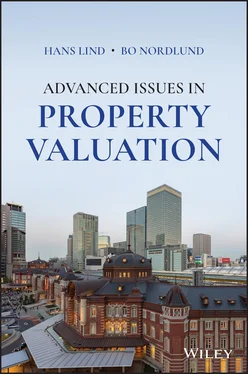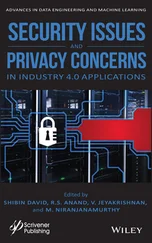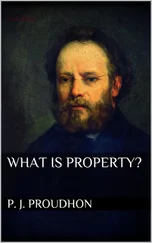© 2021 John Wiley & Sons Ltd
All rights reserved. No part of this publication may be reproduced, stored in a retrieval system, or transmitted, in any form or by any means, electronic, mechanical, photocopying, recording or otherwise, except as permitted by law. Advice on how to obtain permission to reuse material from this title is available at http://www.wiley.com/go/permissions.
The right of Hans Lind and Bo Nordlund to be identified as the author of this work has been asserted in accordance with law.
Registered Offices John Wiley & Sons, Inc., 111 River Street, Hoboken, NJ 07030, USA John Wiley & Sons Ltd, The Atrium, Southern Gate, Chichester, West Sussex, PO19 8SQ, UK
Editorial Office 9600 Garsington Road, Oxford, OX4 2DQ, UK
For details of our global editorial offices, customer services, and more information about Wiley products visit us at www.wiley.com.
Wiley also publishes its books in a variety of electronic formats and by print‐on‐demand. Some content that appears in standard print versions of this book may not be available in other formats.
Limit of Liability/Disclaimer of Warranty In view of ongoing research, equipment modifications, changes in governmental regulations, and the constant flow of information relating to the use of experimental reagents, equipment, and devices, the reader is urged to review and evaluate the information provided in the package insert or instructions for each chemical, piece of equipment, reagent, or device for, among other things, any changes in the instructions or indication of usage and for added warnings and precautions. While the publisher and author have used their best efforts in preparing this work, they make no representations or warranties with respect to the accuracy or completeness of the contents of this work and specifically disclaim all warranties, including without limitation any implied warranties of merchantability or fitness fora particular purpose. No warranty may be created or extended by sales representatives, written sales materials or promotional statements for this work. The fact that an organization, website, or product is referred to in this work as a citation and/or potential source of further information does not mean that the publisher and author endorse the information or services the organization, website, or product may provide or recommendations it may make. This work is sold with the understanding that the publisher is not engaged in rendering professional services. The advice and strategies contained herein may not be suitable for your situation. You should consult with a specialist where appropriate. Further, readers should be aware that websites listed in this work may have changed or disappeared between when this work was written and when it is read. Neither the publisher nor author shall be liable for any loss of profit or any other commercial damages, including but not limited to special, incidental, consequential, or other damages.
Library of Congress Cataloging‐in‐Publication Data
Names: Lind, H. (Hans), author. | Nordlund, Bo, author.
Title: Advanced issues in property valuation : a textbook / Hans Lind, Bo Nordlund.
Description: Hoboken, NJ : Wiley‐Blackwell, 2021.
Identifiers: LCCN 2021015372 (print) | LCCN 2021015373 (ebook) | ISBN 9781119783367 (paperback) | ISBN 9781119796220 (adobe pdf) | ISBN 9781119796244 (epub)
Subjects: LCSH: Real property–Valuation.
Classification: LCC HD1387 .L552 2021 (print) | LCC HD1387 (ebook) | DDC 333.33/2–dc23
LC record available at https://lccn.loc.gov/2021015372LC ebook record available at https://lccn.loc.gov/2021015373
Cover Design: Wiley
Cover Image: Photographed by MR.ANUJAK JAIMOOK/Getty Images, Brzozowska/E+/Getty Images
As we have been working with issues related property valuation for many years, there is a large number of people who over the years have influenced our thinking and/or been part of projects that produced some of the research that this book is based on. We would especially like to mention Erik Persson, Stellan Lundström and Christina Gustafsson for many discussions on valuation issues. Neil Crosby is also a person that we have discussed many of these issues with over the years.
Christina Gustafsson should also be thanked for comments on an earlier version and especially the advice to relate the discussion more to documents produced by international organizations like Royal Institute of Chartered Surveyors (RICS) and the International Valuations Standards Council (IVSC). Four anonymous referees should also be thanked for constructive comments on an earlier version.
Finally, we would like to thank all the people at Wiley that have helped us in a constructive and efficient way.
Hans LindBo Nordlund
1 Introduction
1.1 The General Purpose of the Book
There are a number of good basic textbooks on property valuation, e.g. Property Valuation by Peter Wyatt or the Appraisal Institute´s classic book The Appraisal of Real Estate . 1 These books present basic concepts and valuation methods with a focus on what you need to know to work with valuation issues in the real estate sector, either as a producer of valuations or in a position where you use valuations, and need to understand and evaluate valuations.
This book has been written as a type of ‘advanced’ textbook that problematizes a number of issues that are presented in the basic textbooks. Things in reality are often not as clear as they are in the basic textbooks. There are different views of how useful different concepts and methods really are. Some of the controversies about concepts and methods typically arise in specific episodes on the market, e.g. after a crash on the market or in situations where there seem to be very optimistic views among actors in the market that may raise concerns whether e.g. real estate assets are ‘overvalued’ in the market. Other differences relate to differences between countries and local traditions. Even though there are international cooperation and standardization, such differences still remain. The aim of the book is to introduce readers to these discussions and to make it possible to have well‐informed opinions on these issues. Some advanced textbooks focus on valuation of specific types of properties – from agriculture to hotels or special purpose buildings – but in this book, the focus is on what could be called more theoretical or conceptual issues, but also on some normative issues related to governance and the role of the valuer.
We think that there are at least two different audiences for the book. The first is students in courses on the Master level, where the student has already read one basic course in valuation or in larger basic courses, where the book can be used in the later part of the course. The book should also be useful in other academic courses, e.g. doctoral courses in real estate.
In an economy that changes quickly, there is also a need for courses for real estate practitioners who want to update and deepen their knowledge about property valuation. We have met the opinion that practitioners primarily want ‘cook‐books’ that tell them exactly what to do and that their interest in more conceptual and theoretical issues is limited. As teachers in a large number of such courses, we strongly disagree. In our view, almost everybody wants to understand what they are doing, why things are done in a certain way and alternative ways of looking at things. A broader perspective should also increase creativity and problem‐solving ability for practioners.
1.2 Overview of Issues Covered
The central concept of market value is discussed in Chapter 2. There are several issues that have been discussed concerning market value. Should the definition refer to prudent and knowledgeable actors when actors in the market are not always knowledgeable or prudent? Conditions that a good definition should fulfil are also discussed in this chapter. The connection between price and turnover also creates problems as observed prices alone then do not reflect the situation on the market. Problems with the concept of highest and best use are also discussed.
Читать дальше












